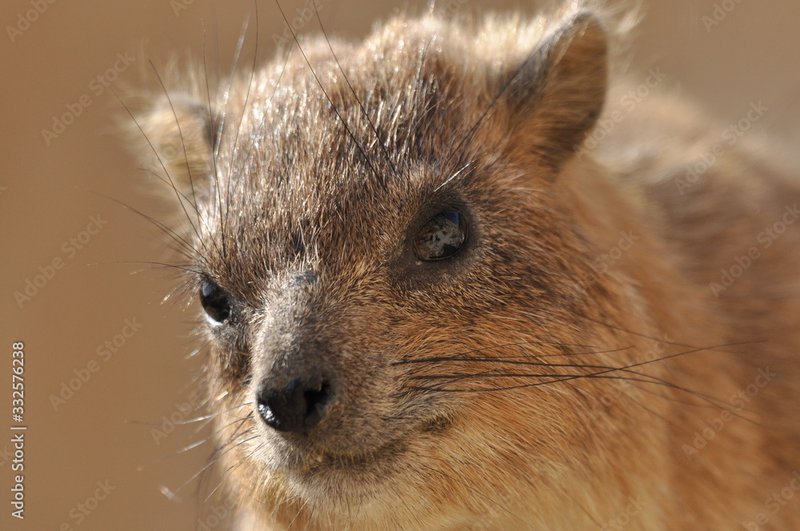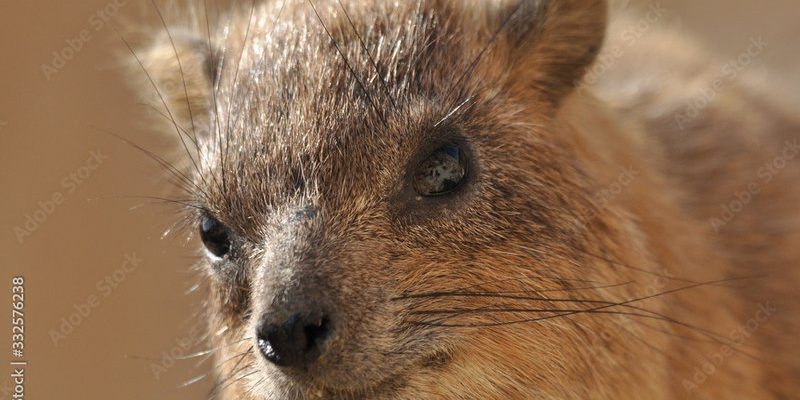
This article is your friendly guide to understanding the rock hyrax. We’ll explore their habitat, diet, social behavior, and unique adaptations that help them thrive in their natural environment. So, grab a cup of coffee, and let’s get to know this fascinating animal!
What Is a Rock Hyrax?
The rock hyrax, or Procavia capensis, is a small, furry mammal that typically weighs between 4 to 11 kilograms (9 to 24 pounds). Their body is compact, with short legs and a rounded shape, which makes them look almost like a fluffy rock. This resemblance is not just for show; being well-camouflaged against the rocky landscapes they call home helps them evade predators.
Rock hyraxes thrive in rocky terrains, primarily found in Africa and parts of the Middle East. They have an impressive knack for scaling rocky cliffs and ledges, making their homes in crevices and small caves. It’s not unusual to see them basking in the sun on warm rocks or gathering in groups to socialize and groom one another.
Social animals by nature, rock hyraxes live in family groups that can range from 10 to 80 individuals. Their communication is quite sophisticated, involving a mix of vocalizations and body language to express everything from alarm to affection. You might be surprised to learn that despite their small size, they can make a variety of sounds, including barks and whistles, to keep in touch with each other.
Habitat and Range
Rock hyraxes prefer rocky outcrops, cliffs, and areas with plenty of boulders. Their homes can be found in diverse environments, from semi-arid regions to lush hillsides. They are adaptable creatures, allowing them to flourish in various habitats, but they tend to shy away from dense forests or open plains where they feel exposed.
Their range stretches across East and Southern Africa, including countries like Tanzania, Kenya, Namibia, and South Africa. You might spot them lounging on large rocks, soaking in the sun, or darting for cover when a predator comes too close. Their natural camouflage helps them blend into their surroundings, providing an additional layer of protection.
Interestingly, the rock hyrax isn’t just a solitary creature. They often live alongside other animals and even form symbiotic relationships. For instance, they share their rocky homes with birds such as the Egyptian plover, which keeps a watchful eye for predators while the hyrax enjoys a peaceful sunbathe. This interaction is a fascinating example of nature’s interconnectedness.
Diet and Feeding Habits
When it comes to food, rock hyraxes are herbivores, munching on a variety of plants, leaves, and grasses. Their favorite snacks include succulent leaves, fruits, and even the bark of certain trees. This diet is not only essential for their survival but also contributes to their unique adaptations.
Rock hyraxes have sharp, chisel-like incisors that allow them to efficiently gnaw through tough foliage. Interestingly, their digestive systems are specially designed to break down the fibrous material in their diet. They can extract the necessary nutrients efficiently, allowing them to thrive in their often harsh environments.
You might wonder how they manage to find food when things get tough, like during a drought. Rock hyraxes are resourceful and have been known to switch up their diets based on availability. They become experts at foraging, making sure to utilize whatever is at hand. By being flexible in their dietary habits, they can adapt to seasonal changes and ensure they stay nourished throughout the year.
Behavior and Social Structure
Rock hyraxes are nothing if not social. Living in groups called colonies, they display fascinating behaviors that help them bond and communicate. These colonies usually consist of multiple generations and are generally led by a dominant male. Social hierarchies keep the peace and facilitate cooperative behaviors, such as grooming and babysitting.
The grooming behavior among rock hyraxes serves two main purposes: it strengthens social bonds and keeps their fur clean and healthy. You’ll often find them taking turns tidying one another up, which is an adorable sight and a testament to their cooperative nature. This grooming ritual also helps them spot any parasites, ensuring that everyone stays healthy.
When it comes to communication, rock hyraxes have an impressive array of vocalizations. They can emit high-pitched sounds to alert others of a predator’s presence, while softer chirps facilitate everyday chatter among family members. This rich vocal behavior makes them one of the more expressive species in the animal kingdom, showcasing their social intelligence.
Physical Characteristics
Rock hyraxes sport a unique appearance, characterized by their stocky bodies and short legs. Their fur is usually coarse and ranges in color from grayish-brown to tawny, helping them blend seamlessly into their rocky habitats. They have small, rounded ears and large, expressive eyes that give them a rather endearing look.
Their limbs are quite short, making them less suited for running. Instead, they are built for climbing and moving swiftly over rocky surfaces. This agility allows them to escape predators quickly, darting into crevices or scaling vertical rocks with astounding ease. It’s almost like they have their own little playground in the wild!
A remarkable feature of rock hyraxes is their nails. Unlike most mammals, their nails resemble hooves, which gives them better grip and traction on uneven surfaces. This adaptation proves invaluable as they navigate their rugged terrain, allowing them to maintain stability and agility as they scamper about.
Predators and Threats
While rock hyraxes are well-adapted to their environment, they are not without their share of predators. Birds of prey, like eagles and hawks, as well as carnivorous mammals such as leopards and jackals, pose significant threats to these creatures. However, their social structure helps them evade these dangers.
When a predator is spotted, the rock hyrax sounds an alarm, prompting the group to scatter and find cover. This cohesive and quick response increases their chances of survival. Their natural camouflage, combined with their ability to hide in rock crevices, further makes it difficult for predators to catch them.
Humans also pose threats to rock hyrax populations. Habitat destruction due to urban development and agriculture can impact their living spaces. Climate change is another concern, as it could alter their habitat and food availability. Conservation efforts are vital to ensure these charming creatures continue to thrive in their natural environments.
Reproduction and Lifespan
Rock hyraxes have a relatively simple reproductive cycle. Mating typically occurs during the rainy season when food is abundant. After a gestation period of about 7-8 months, females give birth to one to three young, known as pups. These pups are born fully furred and with their eyes open, ready to face the world almost immediately.
Nurturing is a communal affair within their colonies. Other females often assist in caring for the pups, which enables the mother to forage for food without worrying about her young. This cooperative breeding strategy strengthens social bonds and increases the chances of the young surviving in the wild.
In terms of lifespan, rock hyraxes can live up to 10 years in the wild, sometimes longer in captivity. Their lifespan can be influenced by various factors, including food availability, predator presence, and environmental conditions. Keeping their habitat safe and thriving is essential for enabling these amazing animals to reach their full potential in the wild.
Interesting Facts about Rock Hyraxes
To wrap things up, let’s dive into a few quirky and delightful tidbits about rock hyraxes that might surprise you:
| Size: | 30 to 65 cm in length |
| Weight: | 4 to 11 kg (9 to 24 lbs) |
| Diet: | Herbivorous – likes grasses, leaves, and fruits |
| Habitat: | Rocky outcrops and cliffs across Africa |
| Lifespan: | Up to 10 years in the wild |
| Social Structure: | Live in colonies of 10 to 80 individuals |
One of the most captivating aspects of rock hyraxes is their ability to regulate their body temperature, much like elephants. They can stay cool in the heat of the day by soaking up the sun and finding shade as needed. This unique adaptation makes them truly remarkable in their approach to surviving in various climates.
Another fun fact is that rock hyraxes have a special relationship with their fellow inhabitants. They often coexist with birds, most notably the Egyptian plover, which is known to feed on ticks and parasites found on the hyrax’s skin. This mutualistic relationship benefits both species, showcasing the beauty of nature’s partnerships.
FAQ
Are rock hyraxes related to elephants?
Yes, it might seem surprising, but rock hyraxes are indeed closely related to elephants. Although they look quite different, they share a common ancestor, making them part of the same taxonomic order. This family connection is fascinating and highlights the diversity of life that has evolved from shared origins.
Can rock hyraxes be kept as pets?
While rock hyraxes may seem like charming pets, they are wild animals with specific habitat needs that are difficult to replicate in a domestic setting. Additionally, they require a social environment, which can be challenging to provide in a home. It’s best to appreciate these creatures in their natural habitats or through conservation efforts that support their populations.
How fast can a rock hyrax run?
Rock hyraxes are not built for speed like some other animals, but they can run at quick bursts when needed. While they typically prefer to scamper, their agility on rocky surfaces allows them to navigate their homes with relative ease, darting into crevices to escape threats.
What do rock hyraxes sound like?
Rock hyraxes have a variety of vocalizations ranging from high-pitched whistles to sharp barks. They use these sounds to communicate with one another, especially during alarm calls to alert the group of incoming danger. Their vocal behavior is quite complex and fascinating, showcasing their social nature.
Do rock hyraxes hibernate?
No, rock hyraxes do not hibernate. Instead, they remain active year-round, finding food and socializing with their colony. They may rest during particularly hot parts of the day, but they do not undergo a hibernation period like some other mammals do.
What predators threaten rock hyraxes?
Rock hyraxes face threats from various predators, including birds of prey, such as eagles, and terrestrial carnivores like leopards and jackals. Their social structure and ability to blend into their rocky environment help them evade these dangers, but they must always remain vigilant.
Are rock hyraxes endangered?
Currently, rock hyrax populations are stable, but they face threats from habitat destruction and climate change. Conservation efforts are crucial for ensuring their habitats remain intact and that these charming creatures continue to thrive in the wild.
How do rock hyraxes stay cool?
Rock hyraxes can regulate their body temperature by basking in the sun during cooler parts of the day and seeking shade when it gets too hot. Their unique adaptations allow them to thrive in a hot, rocky environment, balancing their need for warmth with their need to stay cool.
Can rock hyraxes swim?
While rock hyraxes are primarily land-dwelling animals, they are capable of swimming if necessary. However, they generally prefer to stay on solid ground, where they can utilize their agility and climbing abilities to navigate their rocky habitats.
What do rock hyraxes eat?
Rock hyraxes are herbivores and primarily consume a diet of grasses, leaves, fruits, and the bark of certain trees. Their dietary habits are adaptable, allowing them to thrive even in challenging environments by foraging for available food sources.
How do rock hyraxes communicate?
Rock hyraxes communicate using various vocalizations, body language, and grooming behaviors. Their barks, whistles, and chirps serve to alert others of danger or help maintain social bonds within the colony. This complex communication system is crucial for their survival in the wild.

